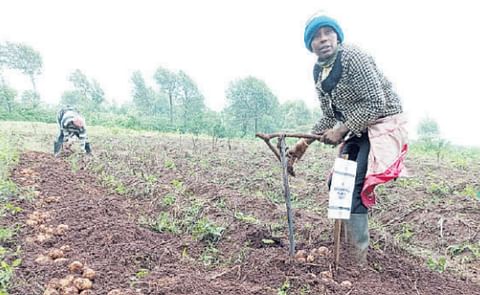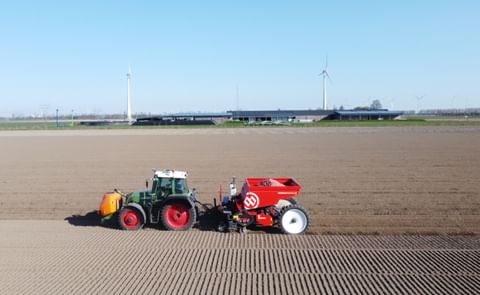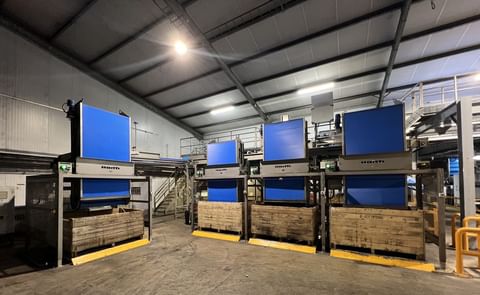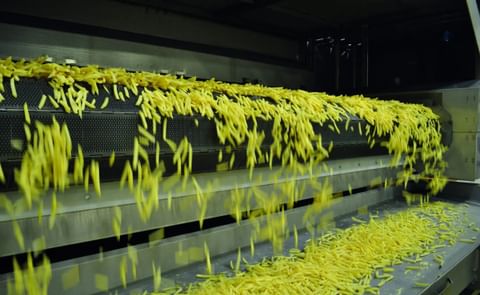Plants infected with the original strain of PVY are difficult to see (pale center plant). However, the newer strains are virtually undetectable with the naked eye (Courtesy: Washington State University).
New Potato Virus Y strains very difficult to detect with the naked eye
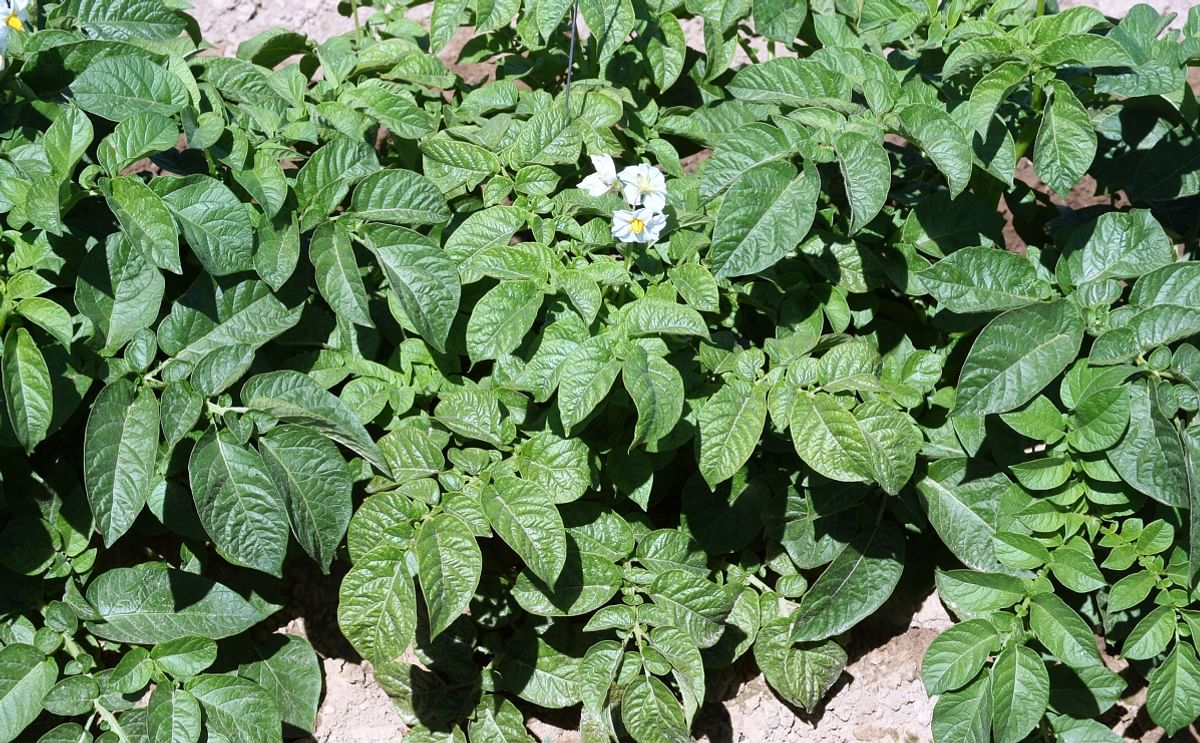
The next time you sink your teeth into a hot, crispy french fry, consider the threats that stand between you and this iconic food. Newly emerged viruses threaten the U.S. potato industry, including potatoes grown in Washington.
More than 85 percent of potatoes from the state’s Columbia Basin feed our french fry habit. As demand for fries continues to rise, the pressure on U.S. growers to produce perfect potatoes is intensifying.
Several newly evolved strains of the disease known as potato virus Y, or PVY, can render potatoes unmarketable and reduce crop yield. What’s worse is the new viruses are particularly difficult to detect with the naked eye.
Mark Pavek, Washington State University potato specialist:
“In the last five years or so that we’ve been watching this, the common PVY-O strain appears to be becoming less common and new strains, such as PVY-NO and PVY-NTN, are becoming more common.”

Newer strains of potato virus Y spread by aphids cause damage to the flesh of the tubers.(Courtesy: Washington State University)
If symptoms can’t be spotted in the field, the disease will spread to healthy plants.
Mark Pavek:
“We used to be able to grow out samples from seed crops to visually inspect for symptoms.”Quick test kits have been developed and are often used to confirm the presence of the virus from a leaf sample. But since symptoms aren’t visible, growers would have to test every single plant – an expensive and impractical prospect.
“Now we have to rely on lab testing.”
Potato researchers have developed some varieties that are resistant to PVY, but they are not yet widely adopted largely because they are relatively new to the industry and processors rely on a wide mix of potato varieties for different purposes. At this point, resistant potato varieties may only fit one niche.
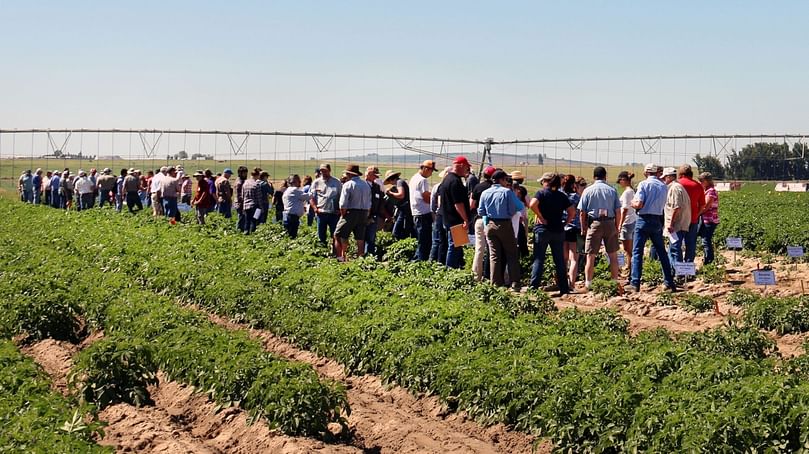
More than 130 potato industry professionals from the U.S., Canada and India learned about the challenges of detecting new potato viruses in a workshop hosted by the WSU Othello Research Farm in June 2016 (Courtesy: Washington State University).
Over 130 potato growers, processors, commission members, seed certifiers and scientists attended from 12 states, Canada and India.
“All of the major potato producing states were represented here,” said Mark Pavek. A field demonstration with 42 common potato varieties showed participants first-hand the difficulty in identifying plants infected with the newer virus strains.
WSU plants a commercial seed lot trial every spring at the Othello farm. The plants are visually inspected for common diseases including PVY and results are reported to the potato industry at the annual WSU Potato Field Day in June. This year, WSU planted 355 seed samples originating from different U.S. regions.
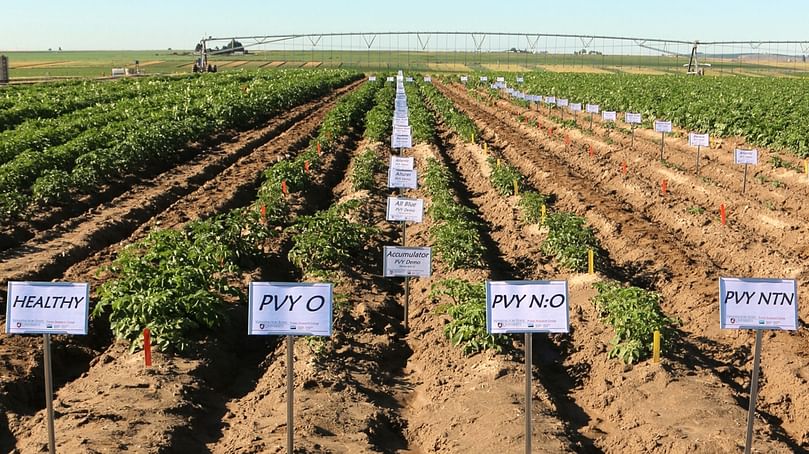
The WSU Othello Research Farm offers ideal conditions for testing potato seed from around the nation (Courtesy: Washington State University).
Mark Pavek:
“What we’re doing here is important for the whole country and probably potato production worldwide.”The potato virus detection workshop was supported by a grant from the USDA NIFA Small Crops Research Initiative. The commercial seed lot trial is funded primarily by the Washington State Potato Commission.
“There’s a lot that goes into getting potatoes to the plate that people don’t see.”
Potato research is in keeping with WSU’s Grand Challenges, a suite of research initiatives aimed at large societal issues. It is particularly relevant to the challenge of producing more high-quality, safe food while minimizing environmental impact.





